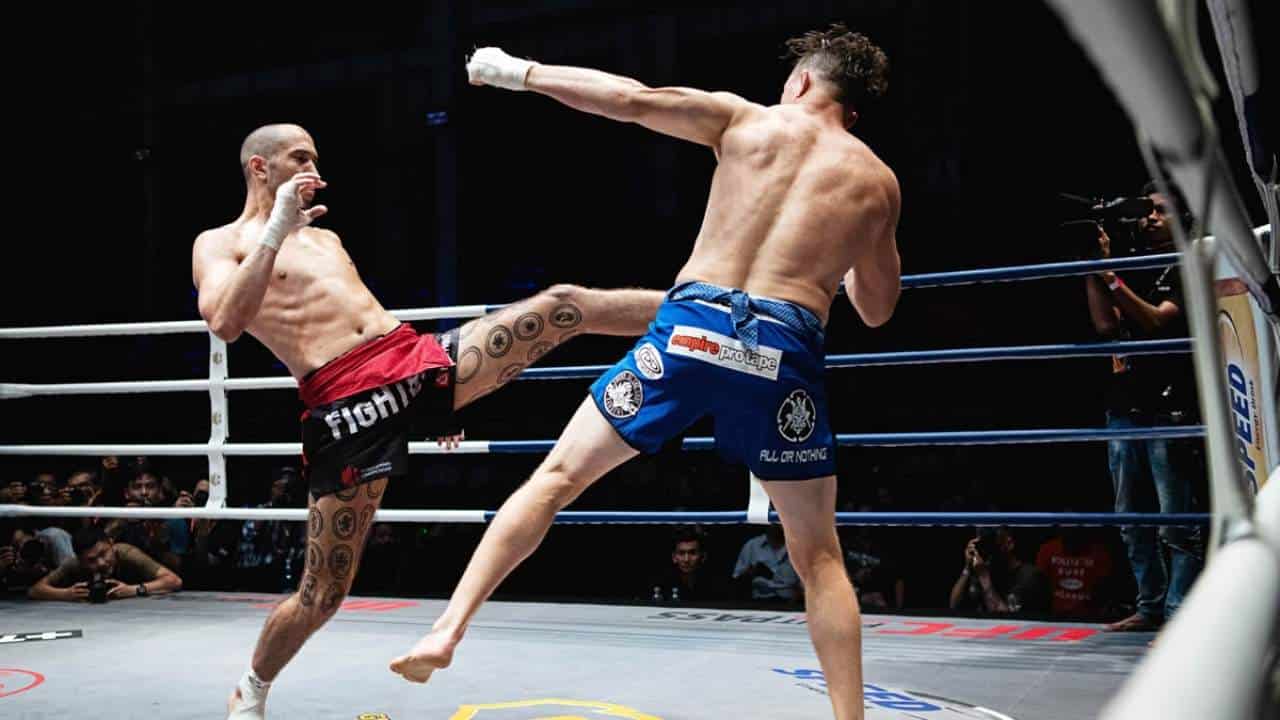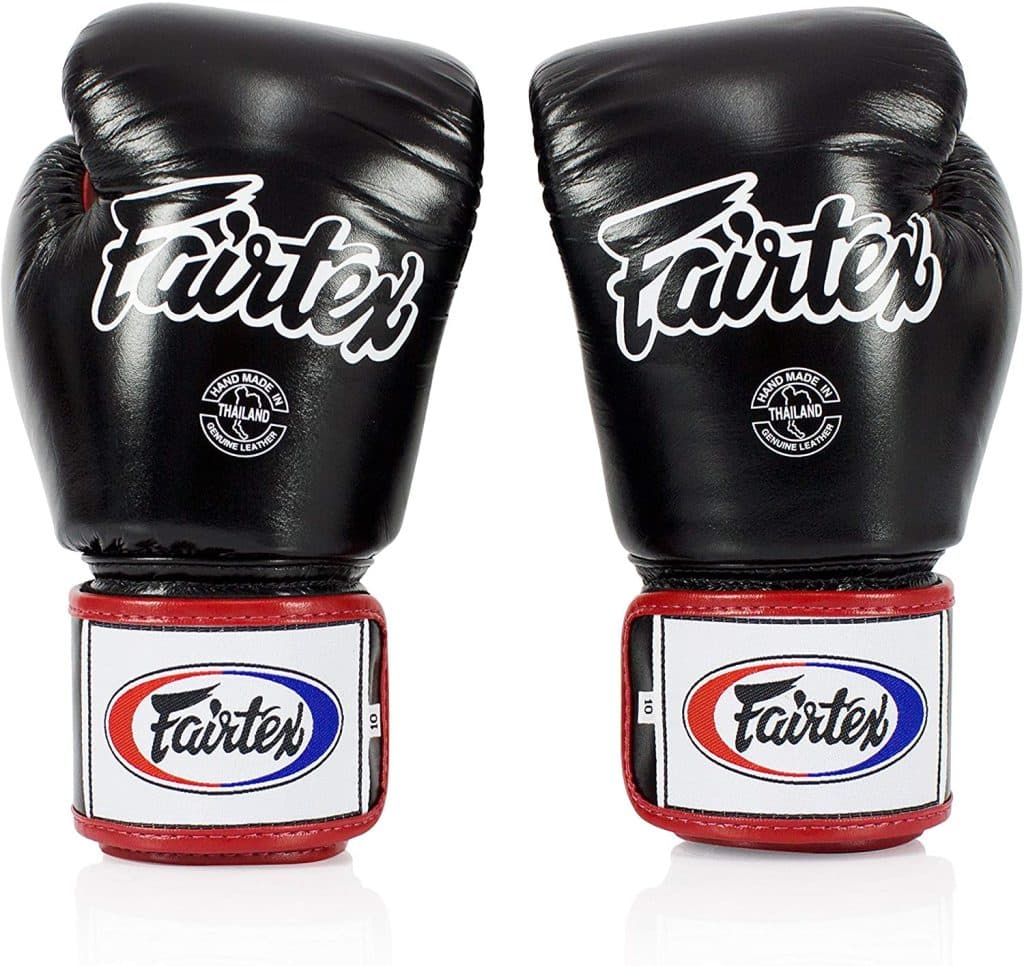Lethwei, or Burmese boxing, is a full-contact martial art from Myanmar that utilizes both stand-up striking and clinching techniques.
Lethwei is closely related to Muay Thai as the two martial arts share many similar techniques. But, Lethwei is known for being more brutal since fighters can use headbutts as a weapon and fight bare-knuckle.
In this article, we dive into the Burmese martial art of Lethwei and explore the history, traditions, techniques and famous Lethwei fighters.
Let’s dive in.
The History Of Lethwei
The martial art Lethwei dates back to the Pyu Empire in Myanmar, which reigned from the 2nd century BC to the middle of the 11th century. Ancient Burmese armies used Lethwei during wars against neighbouring kingdoms.
During ancient times, fights were also held for entertainment and were popular within every level of society. Participation was open to any male, and matches took place in sandpits instead of rings.
Lethwei fighters fought without any protective equipment, only wrapping their hands in hemp or gauze. There were no draws, and fights continued until one of the fighters was knocked out or could no longer continue.
Like the Gracie challenge, Burmese boxing champions would enter the ring and call for open challenges.
Lethwei was modernized in the 1950s when boxer Kyar Ba Nyein formalized the rules and brought awareness of the sport around the globe.
In recent years, Lethwei has exploded in popularity due to increased exposure. Burmese boxing still has a reputation as one of the most violent combat sports globally.
Lethwei Techniques
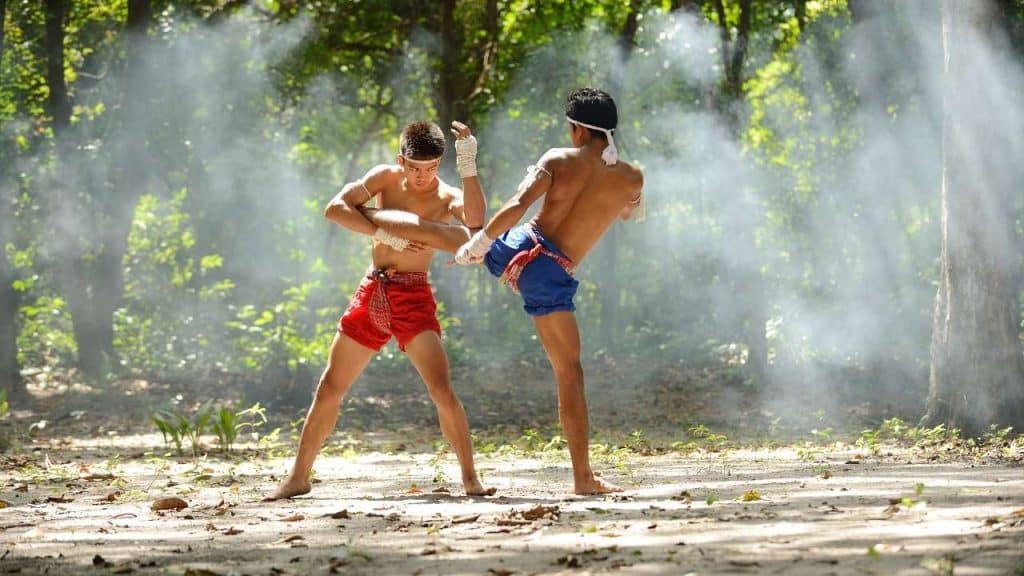
Lethwei is commonly known as the “art of nine limbs” and is considered one of the most brutal martial arts in the world. Fighters can use various techniques, including punches, kicks, knees and elbows, and headbutts are also legal.
Similar to Muay Thai, Lethwei boxers can utilize clinching techniques to control and throw their opponents.
What separates the two martial arts is the use of headbutts in Lethwei.
Headbutts are disallowed in most combat sports but are essential weapons in a Lethwei fighter’s arsenal. This is why Lethwei is also known as The Art of 9 Limbs and has a reputation for being one of the most brutal martial arts in the world.
Below is a summary of the techniques used in Lethwei:
- Headbutts
- Punches
- Elbows
- Knee strikes
- kicks
- Clinching
- Sweeps and throws
Lethwei Rules & Regulations
Every sanctioned combat sport adheres to a series of rules and regulations.
Lethwei implemented rules to ensure that fighters are safe and the audience is entertained during fights.
Below, we discuss in detail the main rules of Lethwei.
How Many Rounds Are In A Lethwei Fight?
Like Muay Thai, Lethwei bouts consist of three-minute rounds, with two minutes of rest between rounds.
Fights can either last three, four, or five rounds, depending on the Lethwei promotion. Under modern Lethwei rules, fighters can also take a two-minute rest period to compose themselves after an injury or knockout.
What Do Fighters Wear In A Lethwei Fight?
Lethwei fighters follow a strict set of attire rules that fighters must adhere to. Below are the main rules.
- Lethwei fighters must only wear tape or gauze on their hands.
- Fighters shall wear only shorts. Tops or shoes are not permitted.
- Lethwei fighters must wear a groin protector.
- The fighters must wear a gum shield.
The Burmese bare-knuckle boxing rules prohibit the use of gloves. Fighters are required to wrap their hands in front of the fight officials, who will check the legality of the wraps.
Legal Lethwei Techniques
As discussed above, Lethwei is known as the art of nine limbs. Below is a summary of the techniques that are used in Burmese Boxing.
- Headbutts
- Punches
- Knee strikes
- Elbow strikes
- Kicks
- Clinching techniques
- Sweeps and throws
Lethwei fighters use their feet, hands, knees, elbows and head in fights.
Lethwei Referee
A referee oversees Lethwei fights. In Burmese boxing, the referee has the power to:
- End the fight if he believes one fighter is significantly outclassed by his opponent.
- The referee ensures the fight is fair and in compliance with the rules.
- End the fight and refer to the doctor if a fighter is heavily wounded.
Traditional Lethwei Rules & Scoring
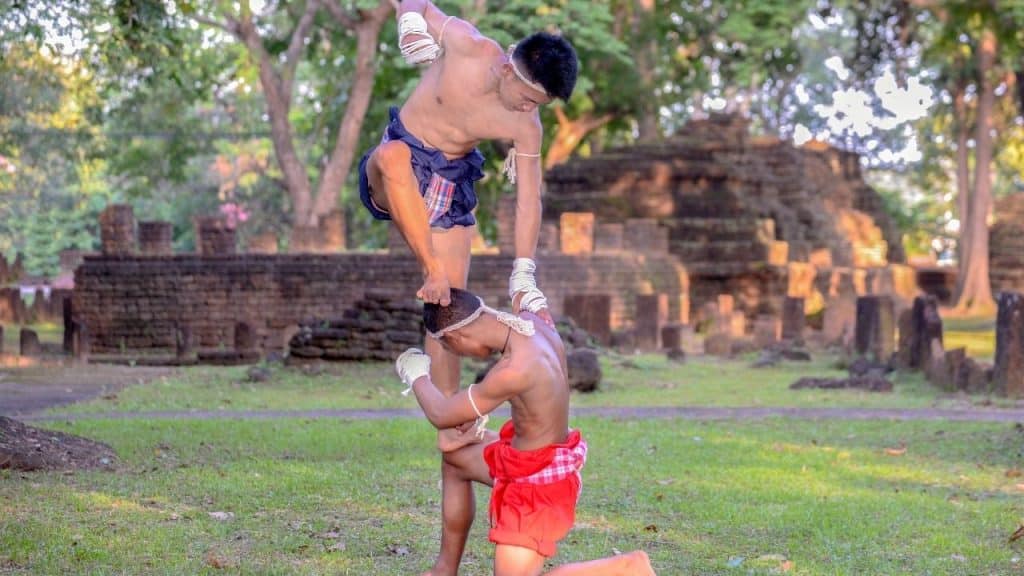
Traditional Lethwei rules, also known as yoe yar rules, are notorious for not having a scoring system. Fighters can win by knockout only in traditional Lethwei.
At the end of the fight, if there is no knockout or stoppage, the match is declared a draw. Fighters can win via TKO or KO several ways.
- A KO (knockout) is when a fighter falls to the ground, loses consciousness or if a fighter can’t stand up or defend themselves for 20 seconds.
- When three counts are performed in one round, the fight is stopped and scored as a knockout.
- When four counts are performed during the fight, the match is stopped and scored as a knockout.
- A technical knockout (TKO) occurs when a fighter has an injury, forfeits or is stopped by the doctor.
Most Lethwei organizations in Mayanmar adhere to traditional Lethwei rules, including festivals and celebrations.
Below is a summary of the most notable Lethwei organizations that use traditional rules.
- Annual Myanmar Lethwei World Championship
- Air KBZ Aung Lan Championship
- International Lethwei Federation Japan
Modern Lethwei Rules & Scoring
In 1996, modern Lethwei rules were established. Developed for the inaugural Golden Belt Championship, the new ruleset removed the two-minute injury timeout and added three judges to score the bout if needed.
The modern ruleset prevents a draw from occurring and helps declare a winner to advance in the Golden Belt Championship.
Whilst most Lethwei organizations still abide by the yoe yar ruleset, Myanmar’s first international promotion, the World Lethwei Championship, promotes the use of modern rules.
Promotions that use modern rules
- World Lethwei Championship
- Annual Golden Belt Championship
The modern Lethwei rules are still designed to encourage fighters to knock out their opponent. Judges score the fight on several areas, including aggression, damage, number of strikes per round, and the amount of blood drawn.
Lethwei fighters can be knocked down a maximum of three times per round or four times throughout the fight before the fight is ruled a knockout.
Traditional Lethwei Rules vs Modern Lethwei Rules
The main difference between traditional and modern Lethwei rules is the adoption of a scoring system.
Using a scoring system ensures a winner is always declared in Lethwei tournaments. It also helps the international growth of Lethwei as fans are used to seeing a winner declared in combat sports.
Lethwei Weight Classes
Weight classes are designed with Lethwei fighters safety in mind. In a mismatched fight, the smaller opponent is more likely to get injured.
Honestly, Lethwei is dangerous enough already without matching smaller fighters against larger opponents.
Weight classes in Lethwei range from light flyweight to cruiserweight. The table below discusses each weight class’s upper weight limits and genders of the weight class.
| Weight Class | Limit lbs | Limit KG | Limit Stone | Gender |
| Light Flyweight | 105 | 48 | 7.6 | Female |
| Flyweight | 112 | 51 | 8 | Male / Female |
| Bantamweight | 119 | 54 | 8.5 | Male / Female |
| Featherweight | 126 | 57 | 9 | Male / Female |
| Lightweight | 132 | 60 | 9.5 | Male / Female |
| Light Welterweight | 140 | 63.5 | 10 | Male / Female |
| Welterweight | 148 | 67 | 10.5 | Male |
| Light Middleweight | 157 | 71 | 11.1 | Male |
| Middleweight | 165 | 75 | 11.8 | Male |
| Super Middleweight | 174 | 79 | 12.4 | Male |
| Cruiserweight | 183 | 83 | 13 | Male |
Traditional Gesture & Pre Fight Ritual
Like the Wai Kru Ram Muay in Muay Thai, Lethwei fighters take part in a pre-fight tradition called the lekkha moun and Lethwei yay.
Below we will discuss both the lekkha moun and Lethwei yay in further detail.
Lekkha moun
The lekkha moun is a traditional gesture performed by fighters to challenge their opponent. The gesture is performed at the beginning of the Lethwei yay and can also be done when fighting to taunt their opponent to be more aggressive.
The lekkha moun is done by clapping three times with the right palm to the triangle-shaped hole formed while bending the left arm. The clapping hand must be in the form of a cup, while the left hand is placed under the right armpit.
The lekkha moun is inspired by the birds of prey, as they flap their wings when hunting.
Lethwei yay
The Lethwei yay is similar to the Ram Muay in Muay Thai.
The Lethwei yay is a fight dance performed before the fight to showcase the fighter’s skills and as a victory dance after the battle. The traditional fight dance is performed as well as the lekkha moun.
Before the modernization of Lethwei, the pre-fight dance was commonly referred to as han yay. Like Muay Thai, the Lethwei yay is performed alongside a traditional orchestra.
Lethwei Training
Lethwei training is similar to what you would expect in a Muay Thai gym in Thailand.
Fighters rely heavily on the basics. Training consists of various drills, including running, shadow boxing, bag-work, sparring and conditioning.
Most Lethwei gyms are often basic, offering no-frills but still providing all the tools you need to thrive as a fighter.
Famous Lethwei Fighters
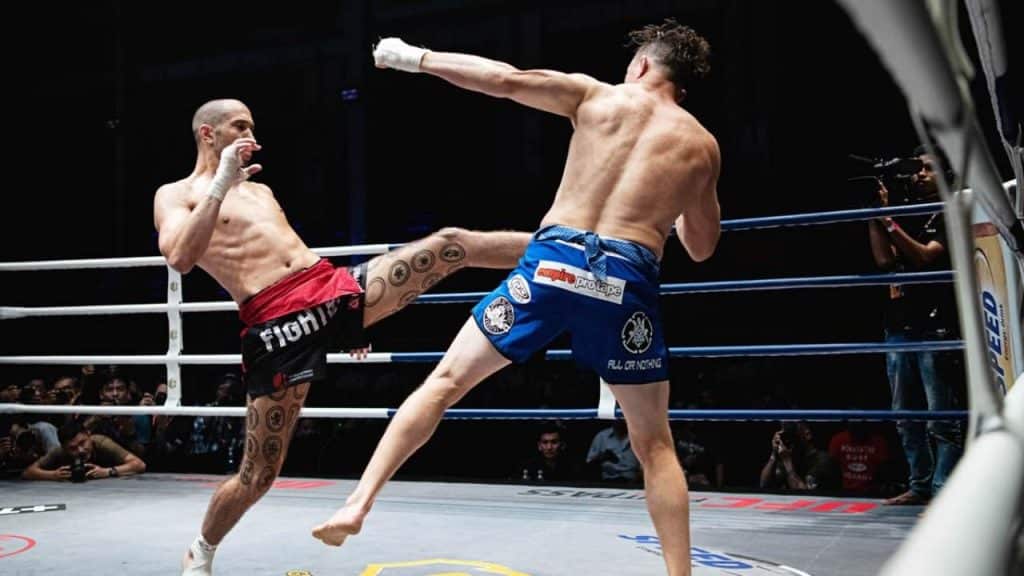
Lethwei has a reputation for producing some of the most dangerous fighters on the planet.
Below we will discuss the most famous Lethwei fighters and their achievements inside and outside of the ring.
Dave Leduc
In recent years, Dave Leduc has taken the Lethwei world by storm.
Dave Leduc is a Canadian Lethwei fighter who competes in the World Lethwei Championship. He has won many accolades throughout his career, including the WLC Cruiserweight World Championship and the Openweight Lethwei World Championship under traditional Lethwei rules.
Leduc defeated Tun Tun Min to become the first non-Burmese fighter to win a Lethwei Golden Belt. Tun Tun Min was considered the best Lethwei fighter in the world at the time.
Leduc also gained notoriety in Thailand by becoming the first Canadian to win a Muay Thai prison fight.
Dave Leduc has helped with the global expansion of Lethwei and is seen as a celebrity in Myanmar. His wedding was even televised nationally to over 30 million viewers in Myanmar.
Too Too
Too Too is a Burmese Lethwei fighter who competes in the World Lethwei Championship. He is a Golden Belt champion and the former WLC Middleweight World champion. At the time of publishing this article, Too Too is still undefeated under traditional Lethwei rules.
Kyar Ba Nyein
Kyar Ba Nyein was a pioneer in modernizing the ancient martial art of Lethwei. He helped develop the modern rules and regulations that have been used since 1953.
Kyar Ba Nyein also participated in the 1952 Olympics in boxing, which took place in Helsinki, Finland.
After retiring from fighting at the age of 33, Ba Nyein devoted his time to train young Burmese boxers in the art of Lethwei. He also worked as a successful sports reporter.
Tun Tun Min
Tun Tun Min is one of the best Lethwei fighters of his generation. He is a former Openweight Lethwei World Champion.
Tun Tun Min is the youngest fighter ever to win the Lethwei Golden Belt, winning the title at the age of 21.
Lethwei vs Muay Thai

Lethwei is closely related to the Thai martial art of Muay Thai. Below we will discuss the similarities and differences between Lethwei and Muay Thai.
Lethwei vs Muay Thai Similarities
- Both Lethwei and Muay Thai follow a set of cultural traditions deeply rooted in society.
- Muay Thai and Lethwei both utilize clinching techniques to control and throw opponents.
- Both Lethwei and Muay Thai originated as a form of hand-to-hand used in ancient battles.
Lethwei vs Muay Thai Differences
- Muay Thai fights are five rounds, whilst Lethwei fights take place over a varied number of rounds depending on the promotion.
- Muay Thai fights can be declared a draw, whereas, in traditional Lethwei, you can only win by KO.
- Lethwei fighters can utilize headbutts as well as kicks, knees, elbows and punches.
- Lethwei is fought with tape and gauze around the knuckles, while Muay Thai fighters use boxing gloves.
- Punching and damage score highly in Lethwei, whilst Muay Thai judges prefer to see kicks and knees.
Is Lethwei Good For MMA?
Due to the success of One Championship, the popularity of MMA in Asia has exploded in recent years.
Recently, elite fighters like Phoe Thaw have transitioned from Lethwei to MMA and signed with the ONE promotion.
Lethwei forms a solid foundation for MMA fighters for several reasons.
Firstly, MMA fighters wear 4 oz open-finger style gloves with minimal protection. This is ideal for Lethwei fighters as they are used to fighting bare-knuckle without gloves. Lethwei fighters focus on head movement and countering strikes instead of blocking the strikes with gloves.
Muay Thai fighters and Boxers tend to protect their head and body with much bigger 8 oz – 10 oz gloves.
The next reason is that Lethwei fighters have a different mindset than fighters in MMA and Boxing. Lethwei fighters are always focused on getting the knockout because that’s the only way to win a fight in their sport. They are not used to winning by scoring points.
Muay Thai and Boxing are essential striking systems in MMA. Due to the similarities between Lethwei and Muay Thai, we have every reason to believe Lethwei fighters could do well inside the cage.
It’s worth noting that, in MMA, Lethwei fighters can’t use their devastating headbutting techniques. These techniques are banned from MMA.
Where Can Your Train Lethwei?
The best place to train Lethwei would be to visit Myanmar, the home of the martial art. Several gyms in Yangon offer classes to travellers visiting the country.
Lethwei is a relatively new sport in terms of popularity, so you won’t find many gyms outside of Myanmar.
If you struggle to find a Lethwei gym in your city, drop your local Muay Thai gym a message to see if they offer any classes or provide a referral.
If there is no Lethwei gym in your local area, you can train Muay Thai and supplement using online training materials.
Summary
Lethwei or Burmese boxing is closely related to Muay Thai as the two disciplines share many similar techniques. Lethwei has a reputation as one of the deadliest martial arts in the world due to the scoring criteria and use of headbutts.
In recent years, the popularity of Lethwei has exploded due to the growth of the World Lethwei Championship and increased exposure in the martial arts community.
Lethwei is a highly effective martial art that forms a solid foundation for MMA.
If you enjoyed our article on the Burmese martial art Lethwei, share it by hitting the button below.

